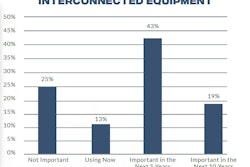
When Trimble in January of 2023 announced its acquisition of construction integration platform-as-a-service (iPaaS) vendor Ryvit, some industry observers may have thought it incongruent.
Integration platform-as-a-service (iPaaS) vendors like Boomi, Celiga, MuleSoft or Informatica are typically independent from the software vendors whose applications they integrate. And what with the multiple products that Trimble has in its Trimble Construction One product line, sources inside and outside Trimble agree Ryvit’s dance card for new integrations may be pretty full into the intermediate future just wiring together the Trimble construction software portfolio to make it function more like a unified application suite.
Current Ryvit integrations will continue to be supported as part of Trimble Construction One, with the primary offerings from Ryvit undergoing a rebrand to Data Xchange for contractors and and App Xchange for developers.
“It will be business as usual,” Ryvit CEO Tom Stemm, who takes on the role of Trimble vice president and general manager of Integrations, said. “We want to be in a position to double down on creating an open, extensible platform. Partners like Tenna will have more power at their fingertips, more capability as they continue to bring our roadmap into fruition Our current integrations will continue to be supported, extend out to the ecosystem We have a pretty large customer base we support directly, but we have always been partner-lead.”
So in the immediate term it means software vendors and end customers that had been planning to rely on Ryvit for this work will have to look elsewhere. And it means a refocusing of the idea \of Ryvit, as an independent entity, becoming what company management referred to as a “rosetta stone” for construction software interoperability. Stemm was quick to make the case that working from inside Trimble could be advantageous to the industry.
“The important thing is preconfigured workflows, preconfigured solutions and preconfigured automation that is unique for the industry,” Stemm said. “Something more standalone and isolated is not going to be able to deal with that.”
But outside of the new combined entity, iPaaS players pointed out the value of behind independent from a solution vendor.
“The AEC industry is trending toward more connected software,” Agave Co-Founder Tom Reno said. “Trimble’s acquisition is another example where a large player invests in interoperability to solve problems across their product line.”
Agave, a startup that had competed with Ryvit, had focused largely on integrating multi-tenant software-as-a-service (SaaS) while Ryvit was known for completing complex integrations with legacy applications that had been developed before cloud or even modern application programming interfaces (APIs).
“While connected ecosystems are valuable, standing them up is time-consuming and expensive,” Reno said. “This has kept wide connectivity mostly in the realm of larger players like Procore, Autodesk, and Trimble, but also somewhat siloed since each platform competes with each other and, inevitably, some parties connecting to it. At Agave, we’re offering another way to drive connectivity—with a neutral platform, self-serve tools, and off-the-shelf integrations to 30+ construction systems, helping companies of all types connect quickly.”
READ THE IRONPROS AGAVE PRODUCT DEEP DIVE
“If your goal is to have a true iPaaS solution, if a vendor owns the iPaaS, the vendor is going to skew investment towards the parent company’s solutions,” Celigo Director of Product Marketing Dave Wallen said. “Celigo and others have to compete based on other factors. We are not the only one, but we think we are the best. But some companies are committed to a strategy that will get the value out of their investment and allow them to be platform agnostic … not be locked into a single technology vendor.”
Understanding iPaaS Independence
Sometimes iPaaS vendors are in fact purchased by software vendors, as is the case with MuleSoft’s AnyPoint Platform which officially became part of Salesforce with the completion of the acquisition in 2018. MuleSoft then became more like a middleware solution as Genie MuleSoft and billed as a “hyperscale real-time data platform” in September of 2022. But now that the technology of MuleSoft has been absorbed, these acquired products are taking the brunt of layoffs at Salesforce, including the front-line workers that would grow and support customers of an independent iPaaS solution. The team of account executives responsible for new sales have been completely eliminated as of November 2022 according to some sources, and cuts to customer success teams responsible for customer retention and hand holding were being slashed in January of 2023 according to ChannelFutures.
Sources at Ryvit we have spoken to are still with the company, and the number of customer success and sales staff at the time of acquisition could have been as low as 10. So, while Ryvit may miss this type of disruption, its value proposition is likely to shift.
“iPaaS has an advantage over other methods of integration in that with standalone integrations, as the APIs of the integrated products change, you have to hard code stuff because it will break,” Wallen said. “If you are integrated through iPaaS, that integration is managed by the iPaaS vendor who gives you their own stable API.”
Many modern iPaaS applications also drive a return by offering low-code, no-code interfaces to allow non-technical users to configure integrations between supported applications.
“Some iPaaS solutions like Celigo and Workato have really democratized integrations,” Wallen said. “Others like Mulesoft or Boomi could technically be used by a business technologist but really, it requires a development team. Once you make it easy enough to connect applications, you realize economies of scale and get simpler and faster integrations. The results of a Forrester Total Economic Impact study we commissioned suggests you can get integrations completed 75% faster. You also get centralized error management. That reduces error resolution time by 90%.”
Error resolution is critical because when an integration is down or not performing well, fingerpointing between vendors can keep an issue unresolved long after a problem stemming clearly from one application has been solved. An iPaaS vendor owned by a software vendor may have the advantage of deeper hooks into the research and development teams of the parent’s software applications. But in situations where issues are attributable to the parent company’s solution rather than a third-party vendor, some of this objectivity may be lost or at least circumspect.
READ THE IRONPROS CONSTRUCTION INTEROPERABILITY PRIMER
Good News for Trimble Construction One
So while the acquisition is mixed news for the broad audience of construction executive teams interested in net new integrations, the news for customers of Trimble Construction one and its component applications is fantastic.
“We see this as an accelerant,” Trimble Vice President and General Manager, Construction management Solutions, Lawrence Smith said. “We want our customers and the Trimble Construction One customers to benefit from this, and we expect this to accelerate our progress. We have already made significant progress on workflows and integrations. Customers are using a wide range of applications that serve their business needs … Many of them may not even use the integrations or connectors Ryvit has today. To bring this to a wider audience will have an effect on the customer base.”
Trimble’s integration challenge within the Trimble Construction One product line is substantial, and multiple acquired products ranging from Viewpoint Vista, Viewpoint Spectrum, B2W, multiple estimating software products and other acquired and organically-developed business and production technologies can benefit. While the addition of the Ryvit team may expedite creation of automated workflows between these applications, work has been ongoing to evolve the data structures behind each product to agree with each other so these integrations will result in an offering that works and feels more like a pure-play suite of applications designed to work together.
“There are places where it will be important to have some common data models—but this is really actually hard,” Farner told IronPros in a 2022 debriefing session. “This will help with the integration activities and application interoperability because each application knows where the data is coming from and where it needs to go.”
READ THE IRONPROS TRIMBLE VIEWPOINT PRODUCT DEEP DIVE
BOTTOM LINE: iPaaS vendors are typically independent of software vendors. But major players intent on market dominance offer more than a product, but rather a platform where new value can be added to the existing solution Examples range from Autodesk with Forge, Salesforce with its Mulesoft acquisition, Oracle with its Oracle Integration Infrastructure, Microsoft’s Dynamics 365 Channel Integration Framework and Microsoft Power Platform and others. These integration tools, combine with a development sandbox to enable integrations and extensions--making for an open and extensible platform. In our 2022 debriefings, Trimble officials were already describing Trimble Construction Cloud as a platform play. With the Ryvit acquisition, Trimble is moving further in that direction by creating an integration infrastructure. At first, this will serve to evolve Trimble Construction One towards being a more integrated suite, yielding something like Oracle Fusion Applications, a collection of point solutions united by a common middleware layer or Infor Global Solutions' Intelligent Open Network (ION). But this could be a first move towards status as a unified platform that enables a community to add value and put Trimble Construction Cloud, launched at Trimble Dimensions+ in 2022, parity with Autodesk Forma.



















